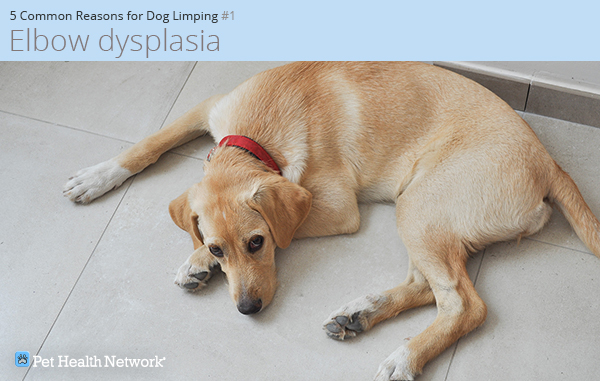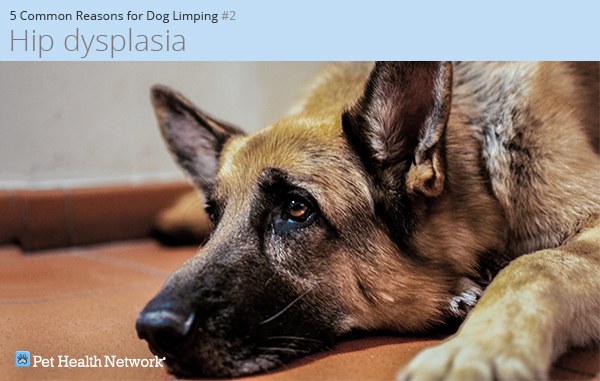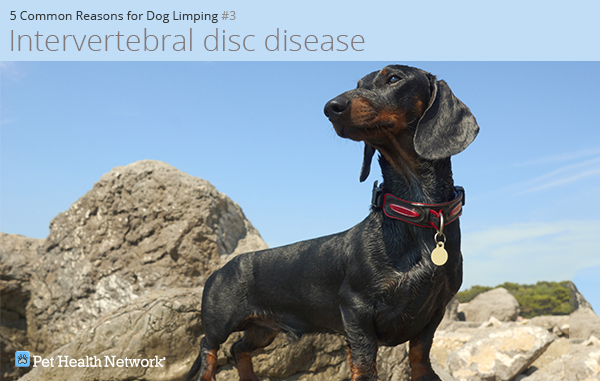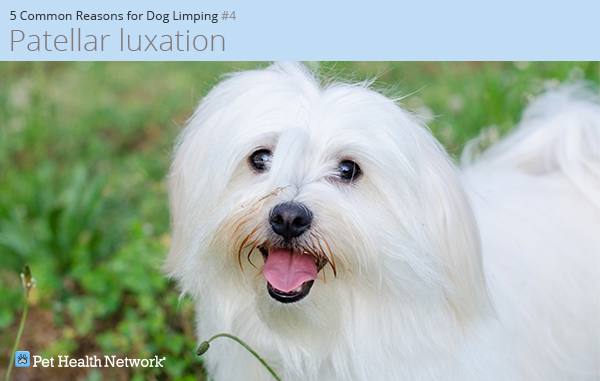Limping and lameness in dogs are generally associated with one or more of the following:
- Muscle sprain or strain
- Contusion/bruise
- Inflammation of a tendon (tendonitis)
- Inflammation of the muscle (myositis)
- Nerve injury
- Injury to the foot (such as wounds, lacerations or foreign bodies
- Injuries or diseases of pads or nails
- Primary bone diseases such as fractures, tumors and inflammatory conditions such as panosteitis
- Joint diseases associated with degenerative conditions, inflamatory or infectious conditions or congenital diseases
Five common joint diseases in dogs
When researchers conducted a large study of purebred and crossbreed dogs with inherited conditions, diagnosed over a 15-year period. They found 10 genetic disorders as being more likely to occur in purebred dogs. The study is posted on the National Center for Biotechnology Information’s website. Of these 10 disorders, I recognized some as orthopedic conditions that I knew to have commonly occurred in my own patients:
1. Elbow dysplasia
This condition occurs most often in purebred dogs, and involves multiple, developmental anomalies of the cubital joint.
[Learn more about elbow dysplasia here.]
2. Hip dysplasia
This condition is a common skeletal disease. Hip dysplasia occurs when a dog’s hip joints don’t develop quite right, allowing the hips to partially dislocate.
According to veterinaryteambreif.com, this condition involves stiffness that may be more noticeable in the mornings. Dogs will have a tough time with stairs, and you might even hear a clicking sound when your dog is walking or running.
[Learn more about hip dysplasia here.]
3. Intervertebral disc disease
Although generally associated with back or neck pain, rather than lameness, intervertebral disc disease is a joint disease.
Canine intervertebral disc disease (IVDD) occurs when a disc in your dog’s spine is ruptured or herniated, leaking its contents and causing severe inflammation and pain for your best friend.
Over time, the discs in your dogs back lose their flexibility, making them more susceptible to injury.
[Learn more about intervertebral disc degeneration here.]
4. Patellar luxation
Patellar luxation comes in medial and lateral forms. It’s seen in dogs of all sizes, but medial patellar luxation in toy or small breeds is the most common presentation, whereas lateral luxation is seen more often in large breeds. Patellar luxation means that the kneecap has popped out of place.
[Learn more about the types of patellar luxation here.]
5. Ruptured cranial cruciate ligaments
In dogs, ruptures of the cranial ligament (CCL) occur in the mid ligament and are associated with progressive, constant fatigue. Complete ruptures of the CCL are usually straightforward and easily diagnosed. In general these conditions are easily treated, but early diagnosis and intervention are important.
[Learn more about torn ligaments here.]
It is always important that any lameness be evaluated by a veterinarian, perhaps with a consultation with an orthopedic surgeon. Learn why even a little limp is so important to have checked out here >>





